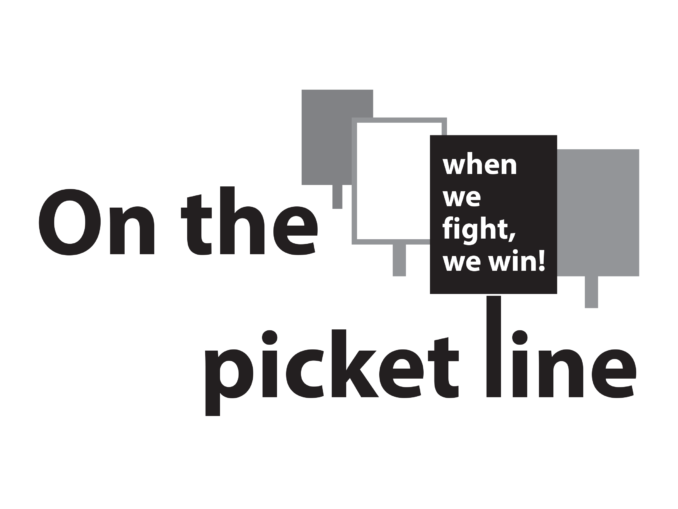On the picket line
Striketober 2022
It’s been a year since last October was dubbed Striketober, referencing the 2021 uptick in strike activity and the wave of union organizing by Amazon and Starbucks workers. The resurgence of worker power has gained momentum in these past 12 months, with union drives, strikes and fighting corporate union-busting tactics.

Workers everywhere have been on the move from Frito-Lay factory workers to the St. Vincent hospital nurses, to unorganized workers at REI and Chipotle. Even the national pastime is not spared with the successful union drive of minor league baseball players. And there is no sign that the strike and union organizing wave is breaking anytime soon.
In Washington and Oregon, lumber giant Weyerhaeuser is feeling the pressure from workers. The 1,200 members of the International Association of Machinists and Aerospace Workers (IAM) District W24 rejected the latest contract offer, which would cut paid time off and increase health care costs. The union called a strike Sept. 13.
The strikers have been joined on the picket line by other unions and community supporters. Longshore union and railway union workers are refusing to load or transport lumber, virtually shutting down plywood distribution to Western states. The last strike at Weyerhaeuser was in 1986.
In Indiana, the 100 workers at piping manufacturer Elkhart Products rejected the company’s offer to give workers a measly 50-cent raise, while health care deductibles would rise. IAM Local 2018 members have been on the picket line since Sept. 23. “It’s the worst contract I’ve ever seen here,” said Glen Hershberger, a nearly 46-year employee, who has experienced several contract negotiations with the company. “People are fed up.” Hershberger said the last strike at Elkhart was over 50 years ago. (tinyurl.com/4j2wzy3e)
California health care workers
In Santa Rosa, California, a health care workers’ strike began Sept. 27 at Sutter Santa Rosa Health. The lab technicians, occupational and physical therapists, pharmacists, dieticians and social workers belong to the International Federation of Professional and Technical Engineers Local 21. And they have been without a contract since July 2021. They accuse Sutter executives of dragging their feet in negotiations.
Citing grievances familiar to professional nurses’ unions, Sutter health care workers want safe adequate staffing to meet patients’ complex needs. For example, lab technicians process COVID-19 tests that are critical to protecting patients. Adequate staffing ensures that results will be available in a timely manner with little margin for error.
Social workers and therapists have been swamped with patients dealing with lingering mental and physical health issues following COVID-19 infections. Three-quarters of the Sutter staff face a wage freeze, which threatens recruitment and retention of these critical workers if the company has its way.
Wins for nurses and farmers
The Michigan Nurses Association-University of Michigan Professional Nurse Council ratified a new contract Sept. 24. In August 96% of the 6,200 members voted for strike authorization.
“Through our months of solidarity and collective action, nurses have stood strong to reach an agreement that meets our members’ priorities of protecting patients and investing in nurses so we can provide the best care possible,” said Renee Curtis, a registered nurse and the union’s president. The new contract ends mandatory overtime, improves mechanisms in place to promote safe staffing and increases wages, all of which are critical for recruitment and retention.
And the UFW farmworkers in California have more protection for union organizing now, as Gov. Gavin Newsom finally caved to pressure from the union and the community and signed Assembly Bill 2183. The UFW had launched an aggressive campaign: organizing a 335-mile march across the state to Sacramento, following the 1966 march route from Delano to the state capital during the historic Grape Strike; then the UFW and their many supporters held a 24/7 occupation of the state capitol building.
The new Agricultural Labor Relations Voting Choice Act facilitates voting in a union election for farmworkers. (Read more about this most recent example of the militancy of the UFW at workers.org/2022/09/66893/ and at ufw.org.)

